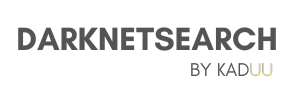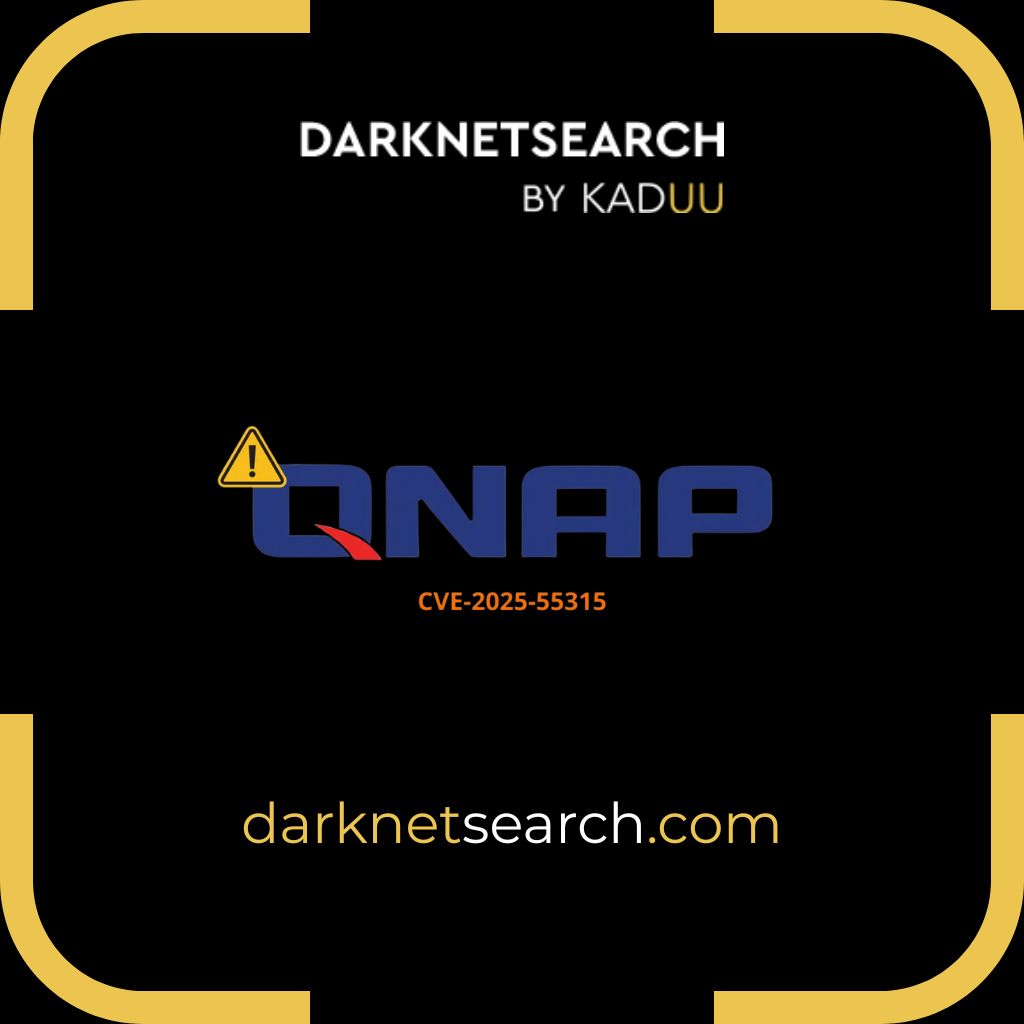➤Summary
QNAP .NET vulnerability is a critical security issue tied to Microsoft’s ASP.NET Core (Kestrel) that exposes Windows machines running QNAP’s NetBak PC Agent to HTTP request smuggling and potential security bypass. This urgent guide explains what the vulnerability is, how defenders can safely test and mitigate, why cyber threat intelligence (e.g., darknetsearch.com) is valuable, and a printable checklist to act now. Read this to prioritize patching, containment, and detection. 🚨🔧📌
What is the QNAP .NET vulnerability and who is affected?
The QNAP .NET vulnerability (CVE-2025-55315) is an ASP.NET Core (Kestrel) parsing bug that can allow specially crafted HTTP requests to “smuggle” a second request past security checks. QNAP’s NetBak PC Agent for Windows can include or use the affected ASP.NET runtime, so unpatched Windows hosts running the agent may inherit the risk. This expands the attack surface from the NAS to client machines that host the backup agent. Initial public reporting and analysis is available from GBHackers.⚠️
How the ASP.NET Core exploit works (high-level, non-actionable)
The ASP.NET Core exploit class here is HTTP request smuggling: inconsistent interpretation of Transfer-Encoding and Content-Length headers between proxies and Kestrel lets an attacker hide a second request inside a permitted one. That hidden request can reach sensitive endpoints or bypass authentication checks depending on app logic and network topology. This description is intentionally non-actionable — do not use exploit code in production. 🧩🔒
Responsible proof-of-concept (summary, not exploit code)
A responsible proof-of-concept demonstrates the issue by sending malformed requests that mix chunked and content-length framing so the server and intermediary disagree on boundaries. In lab reports, the second request reached endpoints that should have been blocked, illustrating the bypass potential. If you must test, run experiments only in isolated labs with written authorization, vendor guidance, or an accredited penetration tester. 🛠️👨🔬
Immediate 7-step mitigation checklist (prioritized) ✅
- Patch first: Install Microsoft’s ASP.NET Core updates and follow QNAP’s advisory for NetBak PC Agent updates — this is the definitive fix.
- Reinstall NetBak PC Agent where the installer pulls the latest runtime, or manually update the ASP.NET Core runtime on affected hosts.
- Bind local services to localhost and restrict listening interfaces with host-based firewalls to reduce remote exposure. 🔐
- Harden front-line proxies/WAFs to perform request normalization and update them — some proxies can mitigate request smuggling when configured correctly.
- Audit logs & EDR telemetry for anomalous HTTP framing, repeated parse errors, or strange local service activity. 🕵️♀️
- Rotate credentials immediately if you detect suspicious events or dark-web mentions of your accounts. 🔁
- Hunt for compromise on machines that run NetBak PC Agent and review backups and exfiltration indicators. ✅
Practical tip: maintain a prioritized inventory of devices with NetBak PC Agent and schedule patching in that order. 🧰
Detection guidance & SOC snippet (for featured snippet)
Top indicators to monitor: (a) HTTP requests with both Transfer-Encoding: chunked and Content-Length present; (b) repeated parse errors or Kestrel exceptions in local logs; (c) unexpected local HTTP requests to NetBak endpoints; (d) newly observed processes performing network I/O after patch windows. Use this as a quick SOC checklist for an IOC hunt. 🔎
Why dark web monitoring (darknetsearch.com) matters here
Dark web monitoring platforms like darknetsearch.com scan leak forums, paste sites, ransomware pages, Telegram channels, and onion sites for exposed credentials, proof-of-access sales, and exploit chatter. When a high-severity issue such as the ASP.NET Core exploit appears, threat actors may rapidly share PoCs, sell access, or post victim data. Early alerts from dark-web feeds let you rotate keys, identify compromised accounts, and prioritize hunts — a critical complement to patching and log analysis. 🔍⏱️
Can this flaw steal NAS data directly? (Q&A)
Q: Can the QNAP .NET vulnerability be used to steal NAS data without local access?
A: Typically, an attacker needs either network access to an affected Windows host or a chain that routes smuggled requests to privileged endpoints. If an exposed, unpatched host is reachable, attackers may access local agent endpoints or elevate the impact — hence urgent patching and containment are required. ✔️
What vendors recommend (expert reference)
Microsoft and QNAP both published advisories: Microsoft’s advisory lists affected ASP.NET Core versions and update guidance; QNAP’s advisory notes NetBak PC Agent exposure and urges users to update or reinstall to obtain patched runtimes. Follow vendor steps as the authoritative remediation path.
Practical checklist (printable)
- Inventory machines with NetBak PC Agent.
- Apply Microsoft ASP.NET Core patches.
- Reinstall/upgrade NetBak PC Agent installers that pull the latest runtime.
- Block or limit endpoints to localhost and harden firewall rules.
- Update proxies/WAFs and enable request normalization.
- Search logs for mixed-header requests and Kestrel parse errors.
- Subscribe to dark-web monitoring and set alerts for your domains, IPs, and CVE. 🔗
Links & resources
- Internal monitoring & guidance: DarknetSearch — dark web monitoring and knowledge base.
- Internal knowledge hub: DarknetSearch Knowledge — monitoring definitions and playbooks.
- External authoritative advisory: Microsoft Security Advisory (CVE-2025-55315)
Conclusion — act now
The QNAP .NET vulnerability is high risk: patch the ASP.NET Core runtime, update or reinstall NetBak PC Agent, harden network exposure, and use dark-web monitoring to detect stolen credentials or exploit chatter. Follow the checklist, hunt for compromise, and rotate secrets if needed. Act now: patch, contain, and monitor. 🔧🔐📈
Discover much more in our complete guide
Request a demo NOW
Your data might already be exposed. Most companies find out too late. Let ’s change that. Trusted by 100+ security teams.
🚀Ask for a demo NOW →Q: What is dark web monitoring?
A: Dark web monitoring is the process of tracking your organization’s data on hidden networks to detect leaked or stolen information such as passwords, credentials, or sensitive files shared by cybercriminals.
Q: How does dark web monitoring work?
A: Dark web monitoring works by scanning hidden sites and forums in real time to detect mentions of your data, credentials, or company information before cybercriminals can exploit them.
Q: Why use dark web monitoring?
A: Because it alerts you early when your data appears on the dark web, helping prevent breaches, fraud, and reputational damage before they escalate.
Q: Who needs dark web monitoring services?
A: MSSP and any organization that handles sensitive data, valuable assets, or customer information from small businesses to large enterprises benefits from dark web monitoring.
Q: What does it mean if your information is on the dark web?
A: It means your personal or company data has been exposed or stolen and could be used for fraud, identity theft, or unauthorized access immediate action is needed to protect yourselfsssss.

